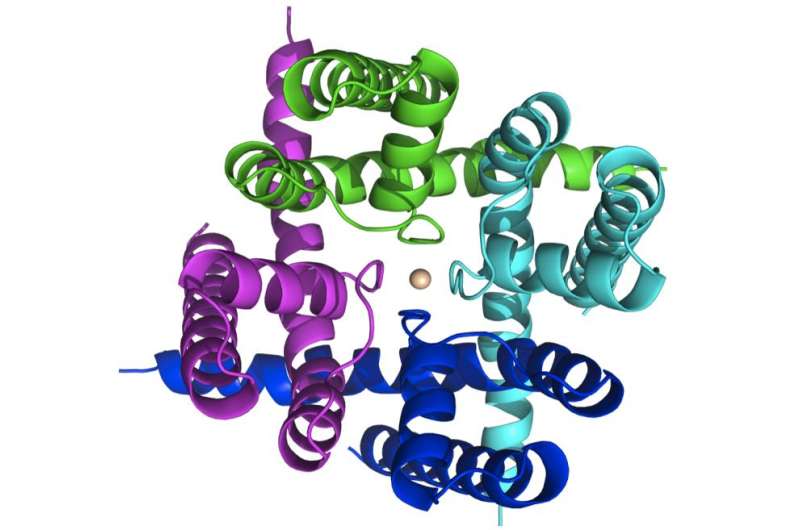X-raying ion channels

The Nobel Prize winner Roderick MacKinnon suggested that ion channels were like rigid tubes through which molecules of varying size move. Now it seems that he was wrong: a team of scientists from SISSA Trieste and the Elettra Sincrotrone Trieste at AREA Science Park used the most robust technique in this field, X-ray crystallography, to watch ionic channels to change their diameter as they adjust to the size of the ions crossing them.
"In this field, x-ray crystallography is considered the ultimate form of evidence: if something is demonstrated with this technique, then it just has to be true" explains SISSA professor Vincent Torre. Torre coordinated a study just published in the Proceedings of the National Academy of Sciences (PNAS) which used x-ray crystallography to demonstrate that the "selectivity filter" of ion channels is dynamic rather than rigid, thereby contributing to the solution to a long-standing debate among biophysicists and neurobiologists.
"Roderick MacKinnon, winner of the 2003 Nobel Prize for his discoveries on potassium channels (k+), believes that the selectivity filter - the core of the ion channel through which the ions actually travel - is a sort of rigid and immutable tube, which any ion can be thrown into", explains Luisa Napolitano, SISSA researcher and first author of the study. "However, many have questioned this view and suggested that the channel might be more flexible than predicted even though it hasn't as yet been possible to demonstrate this directly".
"Our study is the first to demonstrate, with the use of x-ray crystallography, that the channel changes its diameter. And the technique really allows us to see everything at atomic-scale resolution, it's like taking an x-ray of the protein" continues Napolitano. The recently published research paper includes a theoretical section, consisting of computer simulations (mostly done by Ina Bisha, a SISSA researcher) and another section resulting from the collaboration with Elettra Sincrotrone Trieste, under the supervision of Silvia Onesti, head of Structural Biology at Elettra.
"In practice, we took 'snapshots' of a purified and crystallized protein, a mimic of the CNG (cyclic nucleotide-gated) ion channel, one of the main ion channel families, during the passage of six ions of widely different size - from lithium, the smallest, to the very large dimethylammonium", explains Onesti, "and it was clear that the filter's diameter changed linearly with the size of the molecule crossing it".
"The evidence is compelling, we saw it with our own eyes: the ion channel is not a rigid structure but it adjusts to accommodate the molecules crossing it" concludes Napolitano.
This piece of research is also a fine example of synergy between different institutions. "I'm very satisfied with the way this collaboration worked", explains Torre, "it's been a truly collective endeavour with considerable value added, and it could and should be taken as an example of what can be achieved by the 'sistema Trieste', the 'city of science' model for which Trieste is known worldwide".
More information: Pore flexibility underlies the poor selectivity of CNG channels: a structural, functional, and computational analysis, PNAS, www.pnas.org/cgi/doi/10.1073/pnas.1503334112
Journal information: Proceedings of the National Academy of Sciences
Provided by International School of Advanced Studies (SISSA)



















